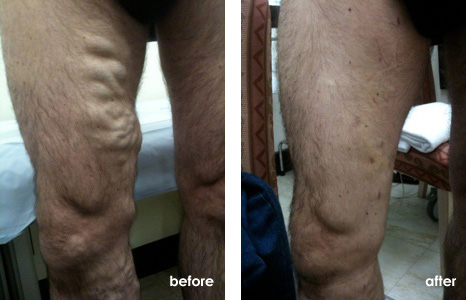Venous Surgery
VARICOSE VEIN SURGERY INTRODUCTION
Surgery for varicose veins typically involves tying off the leaking valve in the groin (so called “high tie”) or behind the knee, stripping a length of refluxing vein through a small incision using a special vein stripper, then avulsing the remaining lumpy veins through small stab incisions (“nick and pick”). This is done under general anaesthesia, sometimes regional or spinal anaesthesia, as a day case or overnight stay in an accredited hospital. Ambulation is encouraged following discharge and compression stockings are worn to aid recovery of the legs.
Surgery has been practiced for several decades, and if done accurately, provides good clinical results, low long term recurrence, and is appropriate for very large, tortuous and extensive varicose veins. However, surgery has a number of disadvantages including wound complications, need for anaesthesia and hospitalisation, permanent scarring (albeit very small scars), down time from work or normal physical activity, and very small risk of injury to other adjacent blood vessels and nerves.
Surgery also does not remove the very small reticular veins or spider veins, which subsequently require sclerotherapy.

 03 9329 4009
03 9329 4009